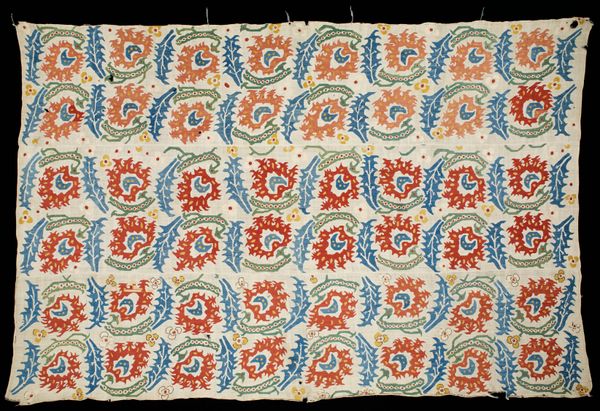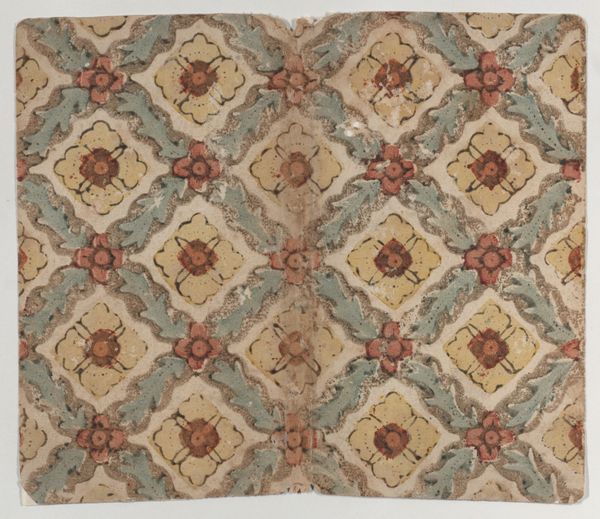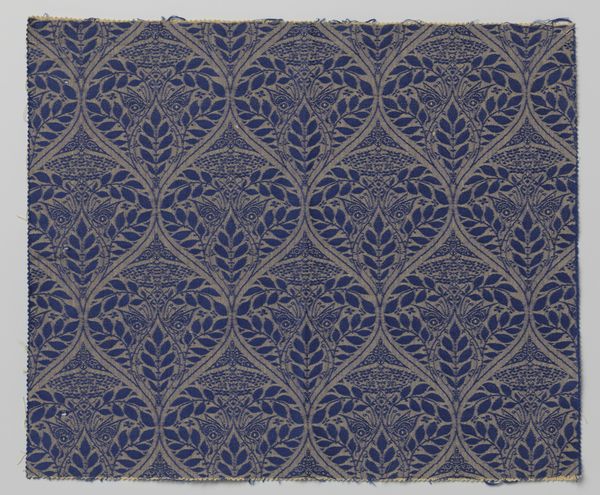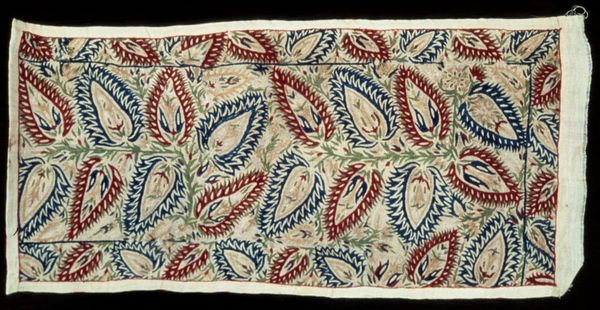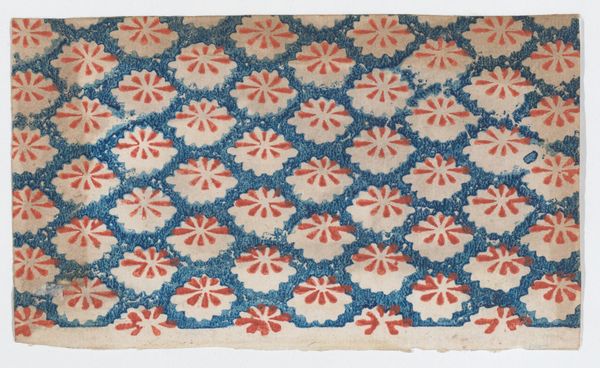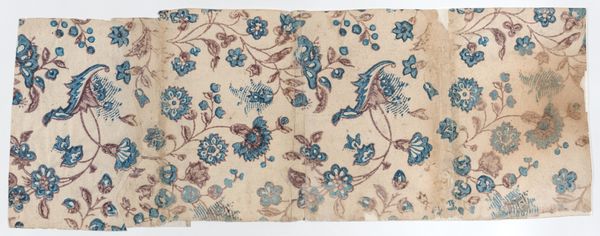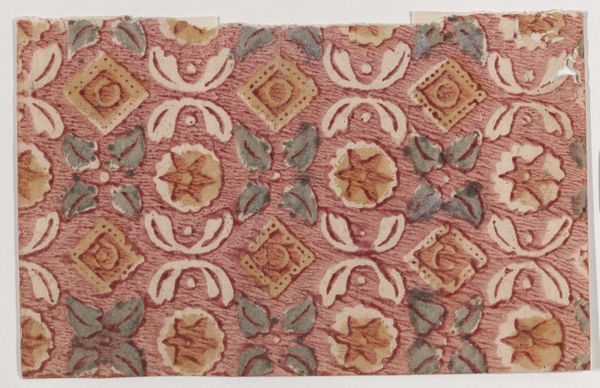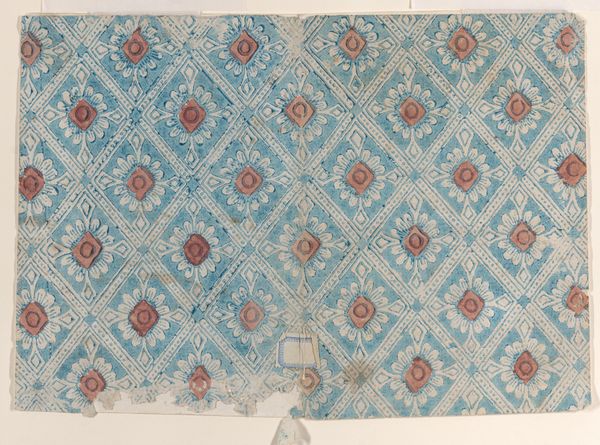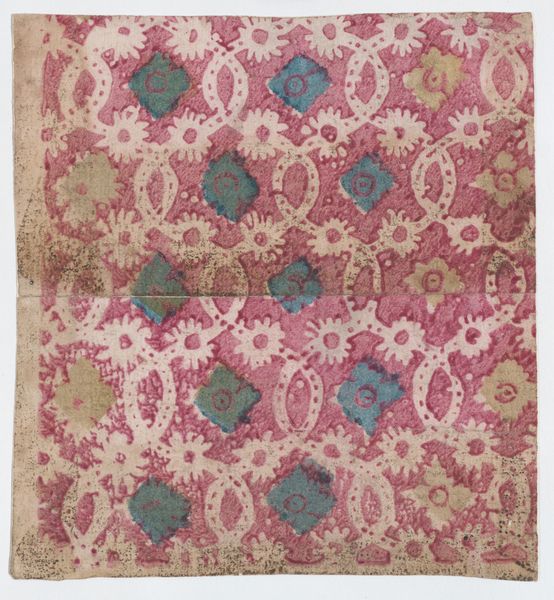
textile
#
organic
#
textile
#
geometric pattern
#
organic pattern
Dimensions: 33 x 40 in. (83.82 x 101.6 cm)
Copyright: Public Domain
Editor: This is an intriguing textile panel, dating back to around the 18th century. It’s anonymous and features organic and geometric patterns. I’m drawn to the repetition and craftsmanship involved. What can you tell me about this panel? Curator: For me, this piece speaks volumes about the materials used and the social context in which it was made. Notice how the patterns aren’t perfectly uniform. To me, that speaks of a handmade quality, hinting at the labor involved in its production. Editor: Right, it definitely doesn’t look machine-made. How do you see its cultural context playing a role? Curator: Well, textiles in the 18th century were deeply tied to trade, class, and identity. Consider the dyes, for instance. Were they locally sourced, or did they come from afar? The answer impacts our understanding of trade routes, economic systems, and the social standing of those who commissioned or created this panel. It may blur the lines between craft and art, but also hints at gender and class hierarchies of that era. What does the geometric element evoke for you? Editor: It adds to a structured feel among the flowing natural designs. Are the two working in concert, or are they dissonant? Curator: I find that question interesting, as dissonance is not an either/or binary but an exercise of tension, dialogue, friction, and release, perhaps analogous to how we consider the natural world under control or external to humans. Look closely again. How are organic elements constrained within geometric structures, hinting perhaps, about constraints? It challenges traditional art historical emphasis on the artist and pushes us to consider labor and access. Editor: That’s fascinating. It definitely makes me consider the societal structures that might have influenced the design and creation of this panel. Curator: Exactly. It invites us to move beyond aesthetics and delve into the materiality of culture itself. It shifts our gaze toward labor, consumption, and the interwoven dynamics of production. Editor: I never thought I would appreciate a panel so much but shifting the narrative on how art is made has added a layer I’ve always sought in material art. Curator: And conversely, challenging traditional distinctions while emphasizing the social implications of craft!
Comments
No comments
Be the first to comment and join the conversation on the ultimate creative platform.
